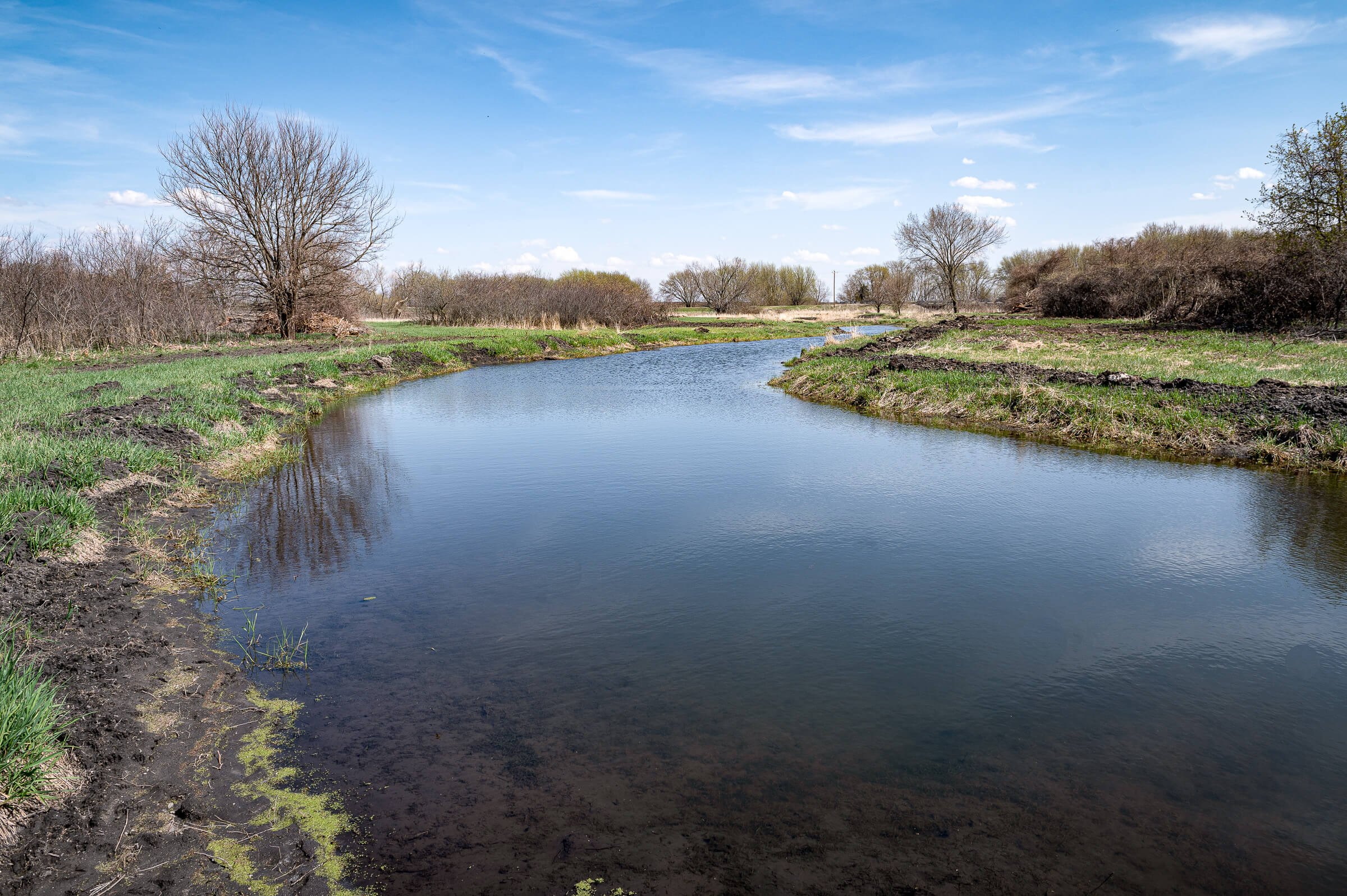
The Iowa Soybean Association and Syngenta are collaboratively improving conservation efforts, like this oxbow north of Webster City, Iowa. These efforts benefit the endangered Topeka Shiner and rusty patched bumble bee. (Photo Credit: Joseph L. Murphy/Iowa Soybean Association)
Iowa Soybean Association, Syngenta Partner to Rebuild Topeka Shiner, Rusty-Patched Bumble Bee Populations
May 14, 2020
Two endangered species are receiving a boost in Iowa thanks to a hands-on partnership involving soybean farmers, landowners and a global company providing crop protection, seeds, seed treatments and traits to farmers.
The Iowa Soybean Association (ISA) and Syngenta, in collaboration with The Nature Conservancy and other partners, are restoring much-needed habitat for the Topeka shiner and rusty-patched bumble bee. Both are listed as endangered by the U.S. Fish and Wildlife Service.
Corey McKinney of ISA’s Research Center for Farming Innovation knows firsthand. The conservationist has immersed himself in working directly with farmers and landowners to restore oxbows prized by the Topeka shiner and establish wildflower plantings preferred by the rusty-patched bumble bee.
“Iowa’s landscape continues to evolve and doesn’t always maximize the potential benefit to endangered species,” he says. “But, as these projects demonstrate, we can boost populations by restoring much-needed habitat.”
The Topeka shiner, for example, prefers off-channel water. The U-shaped extension of a stream, river or creek that becomes separated from the main channel is ideal habitat for the freshwater fish. Over time, however, oxbows can fill with sediment, compromising their ability to sustain aquatic life, reduce flooding and filter water naturally.
Enabled the help of site visits, aerial imagery and conversations with farmers and landowners, oxbows are being restored across the Boone and Raccoon watersheds. Three more projects are nearing completion with a fourth expected to be finished by fall. Thirty-five additional oxbow restorations are planned.
McKinney specializes in developing environmental management systems benefiting conservation and farm productivity. He describes the impact of restoring oxbows as “immediate and incredibly positive.” An evaluation of three of the most recently completed projects, he says, found Topeka shiner populations had returned in two shortly after restoration was completed.
“The improved habitat helps many other fish species repopulate, too,” McKinney adds, “including minnows and game fish prized by anglers. The areas also provide benefits for other wildlife like waterfowl and turtles.”
The extended benefits of wildlife habitat also hold true for the rusty-patched bumble bee. It prefers long-blooming varieties of wildflowers. The unique qualities of such habitat and its scarcity have made life difficult for the pollinator.
Since 2018, McKinney has worked with farmers, landowners and Habitat Forever to establish ten wildflower plantings covering 14 acres. Located in eastern Iowa, the collaborations on public and private land hold tremendous promise.
“Restoring pollinator habitat involving wildflowers takes time but early results are promising,” he says. “We’re excited to be back in the field, assessing plots and determining their impact on bee populations.”
McKinney devoted time last fall and winter to scouting the suitability of new sites and recruiting participants. The goal is to add five acres of wildflower plantings by summer.
“The rusty-patched bumble bee needs unique habitat, which is one reason why its numbers have struggled,” he says. “But whenever you find a mix of vegetation that flowers from spring to fall, you’ll create ideal habitat for a variety of pollinators, including the Monarch butterfly.”
Innovative projects are a strategic fit for ISA and Syngenta given a shared history of digging in and collaborating to achieve results on critical issues impacting agriculture.
“We work with organizations that are farmer-driven, innovative and connect farm productivity with conservation,” says Caydee Savinelli, Syngenta stewardship team and pollinator lead. “The Iowa Soybean Association is a trusted and respected linkage between farmers and the companies who serve them.
“We each bring unique talents to the table,” adds Savinelli, referencing the technical services and resources provided by Syngenta in support of the project. “It takes a lot of partners and unique skillsets to make initiatives like this work.
“And it’s about networking and collaborations – that’s how we succeed in helping farmers and their agricultural suppliers enhance productivity and critical biodiversity.”
For more information or to evaluate land suitable for habitat restoration, go to iasoybeans.com or contact McKinney at cmckinney@iasoybeans.com or 515-334-1077.
The Iowa Soybean Association (www.iasoybeans.com) is “Driven To Deliver” increased soybean demand through market development and new uses, farmer-focused research and results, timely information and know-how and policy initiatives enabling farmers and the industry to flourish. Founded in 1964 by farmers to serve farmers, ISA is governed by a board of 22 farmers to advocate on behalf of the state’s 40,000 soybean producers, including more than 15,000 ISA farmer members and industry stakeholders.
Back